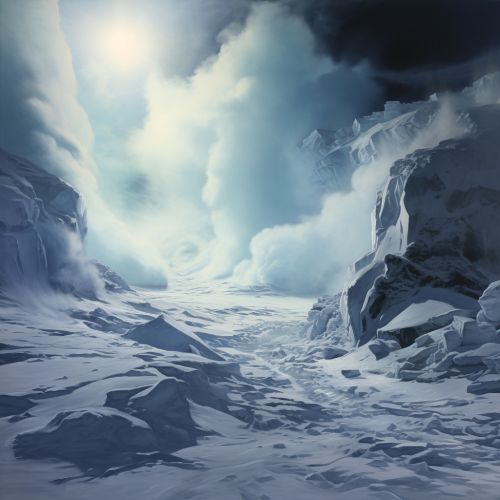The Dynamics of Subglacial Volcanism and Ice Sheet Interactions
Introduction
Subglacial volcanism refers to the volcanic activity that occurs beneath ice sheets or glaciers. This unique form of volcanism is primarily observed in polar regions and high-altitude environments where extensive ice cover exists. The interaction between the heat produced by volcanic activity and the overlying ice creates a dynamic system with unique geological and climatic implications.


Geological Characteristics of Subglacial Volcanoes
Subglacial volcanoes, also known as tuyas, are characterized by their flat-topped, steep-sided morphology. This unique shape is a result of the interaction between lava and ice, which cools the lava rapidly and prevents it from spreading too far. The term 'tuya' comes from Tuya Butte in British Columbia, Canada, the archetype of this type of volcano.
The formation of a subglacial volcano begins with the eruption of lava beneath an ice sheet. The intense heat of the lava causes the overlying ice to melt, creating a subglacial lake. The pressure of the water in this lake suppresses the explosive potential of the eruption, leading to the effusion of lava rather than an explosive eruption. The lava then begins to build up around the vent, creating a mound of volcanic material.
As the eruption continues, the mound grows in size, eventually breaking through the surface of the ice. At this point, the eruption becomes subaerial, and the characteristics of the lava change. The rapid cooling effect of the water is no longer present, allowing the lava to spread further and form a cap on the top of the volcano. This cap is often composed of more silica-rich lava, which is more viscous and resistant to erosion.
Impacts on the Ice Sheets
The heat produced by subglacial volcanic activity has a significant impact on the overlying ice sheets. The most immediate effect is the creation of a subglacial lake, which forms as the heat from the eruption melts the ice. This lake can have a significant impact on the dynamics of the ice sheet, affecting its movement and stability.
In addition to the creation of subglacial lakes, the heat from the volcanic activity can also cause widespread melting of the ice sheet. This melting can lead to the formation of ice streams, fast-moving sections of the ice sheet that can significantly accelerate the movement of ice towards the ocean. This increased ice movement can contribute to sea level rise, particularly if the volcanic activity is sustained over a long period of time.
Furthermore, the heat from subglacial volcanic activity can also influence the internal temperature of the ice sheet. This can affect the rheology of the ice, changing its physical properties and behavior. For example, warmer ice is more deformable and can flow more easily, which can also contribute to increased ice movement.
Climatic Implications
Subglacial volcanism can have significant climatic implications, both locally and globally. Locally, the heat from the volcanic activity can cause significant melting of the ice sheet, which can lead to changes in local climate and hydrology. For example, the influx of fresh water into the ocean can affect ocean currents and temperatures, which can in turn influence local weather patterns.
Globally, subglacial volcanic activity can contribute to climate change through the release of greenhouse gases. Volcanoes are a natural source of carbon dioxide, a potent greenhouse gas. When a subglacial volcano erupts, the gas is initially trapped beneath the ice. However, as the ice melts, the gas can be released into the atmosphere, contributing to global warming.
In addition to carbon dioxide, subglacial volcanoes can also release significant amounts of sulfur dioxide. This gas can react in the atmosphere to form sulfate aerosols, which can reflect sunlight and cool the Earth's surface. This cooling effect can counteract the warming effect of the carbon dioxide, leading to complex and unpredictable impacts on global climate.
Notable Examples
One of the most notable examples of subglacial volcanism is found in Iceland, a country known for its active volcanism and extensive ice cover. The Vatnajökull ice cap, the largest in Iceland, covers several active volcanoes. The most famous of these is probably Grímsvötn, which has erupted several times in recent history, most notably in 2011.
Another notable example is found in Antarctica, where the active volcano Mount Erebus is partially covered by the Ross Ice Shelf. The interaction between the volcanic activity and the ice has created a unique and dynamic system, with significant implications for the stability of the ice shelf.
